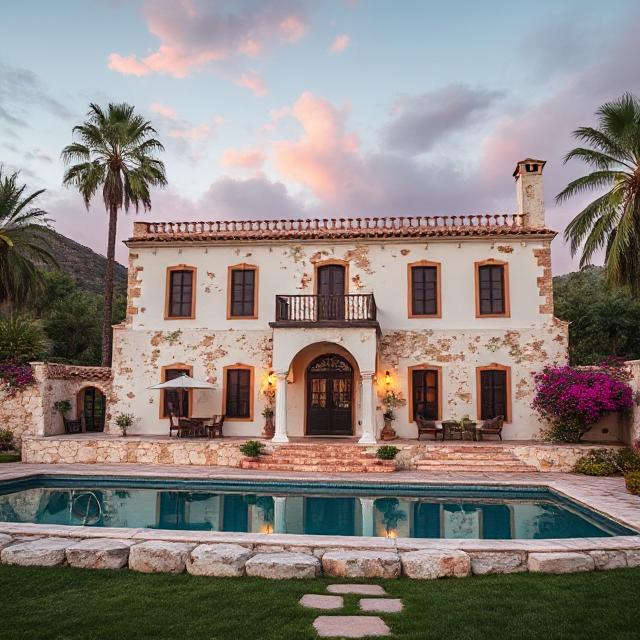Explore The Villa Catrina
In the vibrant tapestry of Mexican culture, few symbols evoke as much fascination and depth as the image of La Catrina. Originally created by the celebrated Mexican artist José Guadalupe Posada and later popularized by Diego Rivera and others, La Catrina has become an emblem of Día de los Muertos (Day of the Dead) celebrations. Among the myriad representations inspired by this iconic figure, “Villa Catrina” stands out as a captivating fusion of art, architecture, and cultural identity, embodying the spirit of remembrance, artistry, and Mexican pride.
Origins of La Catrina: From Satire to Cultural Icon
To understand Villa Catrina, it’s essential to trace the origins of La Catrina itself. In the early 20th century, José Guadalupe Posada, a Mexican engraver and printmaker, produced a lithograph of a skeleton dressed in elegant European attire. Originally titled “La Calavera Garbancera,” the figure was a satirical critique of Mexican society’s obsession with European fashion and social status, particularly mocking those who sought to imitate European aristocracy at the expense of indigenous roots.
Diego Rivera, the renowned Mexican muralist, later popularized La Catrina by incorporating her into his murals, emphasizing her as a symbol of Mexican identity and the importance of embracing mortality with humor and dignity. Over time, La Catrina transitioned from a satirical caricature to a revered emblem of Día de los Muertos, celebrating the cycle of life and death with colorful festivities and artistic expressions.
The Concept of Villa Catrina: Merging Art, Architecture, and Culture
“Villa Catrina” extends this cultural symbolism into architectural and artistic realms. While there are several establishments, events, and artistic projects bearing the name “Villa Catrina,” the term often refers to spaces that celebrate Mexican art, heritage, and the Día de los Muertos tradition through elaborate design, cultural exhibits, and themed festivities.
Architectural Inspiration
Villa Catrina’s architecture often reflects a blend of traditional Mexican motifs with modern design elements. Buildings or spaces named after Villa Catrina typically feature vibrant colors, ornate facades, and decorative skull motifs, echoing the aesthetic of Día de los Muertos altars (ofrendas). These structures serve as cultural hubs—museums, galleries, or community centers—that aim to preserve and promote Mexican customs.
For example, some Villa Catrina venues are designed as immersive environments where visitors can experience the artistry of papel picado (cut-paper decorations), calaveras (skulls), and marigold flowers, all integral to Día de los Muertos celebrations. The architecture often incorporates elements reminiscent of Mexican haciendas, with courtyards, colorful tiles, and intricate ironwork, creating a welcoming atmosphere that invites visitors to explore and celebrate.
Artistic Expressions
Beyond architecture, Villa Catrina is also associated with artistic endeavors. Artists frequently create sculptures, paintings, and installations inspired by La Catrina’s image. These artworks are displayed publicly during Día de los Muertos festivals, and many are crafted into life-sized statues or intricate masks.
Some artistic projects involve constructing large-scale Catrina figures dressed in elaborate costumes, symbolizing the diversity and creativity of Mexican culture. These sculptures often feature handmade details—sequins, feathers, and traditional textiles—highlighting the craftsmanship involved in Mexican folk art.
Cultural Significance and Community Engagement
Villa Catrina serves as more than just an aesthetic or architectural concept; it is a cultural catalyst that fosters community engagement and cultural education. During Día de los Muertos, venues named Villa Catrina host parades, workshops, and exhibitions aimed at educating both locals and tourists about the significance of honoring ancestors.
These celebrations emphasize the importance of remembering loved ones who have passed away, encouraging families to create personalized altars that include photographs, favorite foods, and mementos. Villa Catrina spaces often organize storytelling sessions, traditional music performances, and dance to deepen the understanding of Mexican heritage.
Furthermore, Villa Catrina plays a pivotal role in promoting Mexican artisanship. Markets and fairs held at these venues showcase handmade crafts, textiles, and culinary delights, ensuring that indigenous skills and traditions are preserved and appreciated.
Global Influence and Modern Interpretations
Over the years, Villa Catrina and La Catrina have transcended Mexican borders, inspiring artists, designers, and cultural institutions worldwide. The imagery of the decorated skulls and vibrant festivities has been embraced globally, influencing fashion, home décor, and pop culture.
Contemporary artists have reimagined Catrina figures with modern twists—incorporating elements like street art, digital media, and avant-garde fashion—while still honoring the core symbolism of mortality and cultural pride. This global appreciation has led to international exhibitions and collaborations that showcase Mexican artistry on the world stage.
In urban centers such as Los Angeles, New York, and Paris, themed events and galleries celebrate Villa Catrina, fostering cross-cultural dialogue and appreciation. These efforts highlight the universality of Día de los Muertos’ themes—remembrance, celebration of life, and cultural identity.
The Future of Villa Catrina
As Mexican culture continues to evolve, so does the concept of Villa Catrina. Future initiatives aim to deepen the integration of art, architecture, and community engagement, ensuring that the symbolism of La Catrina remains relevant and vibrant.
Educational programs are being developed to teach younger generations about the cultural roots and artistic techniques associated with Día de los Muertos. Sustainable practices are also being incorporated into the construction and decoration of Villa Catrina spaces, aligning with global efforts toward environmental consciousness.
Moreover, digital platforms and virtual reality experiences are opening new avenues for sharing Villa Catrina’s cultural richness with a broader international audience, making the tradition accessible beyond physical boundaries.
Conclusion
Villa Catrina stands as a testament to the resilience and creativity of Mexican culture. Rooted in the satirical origins of La Catrina, it has blossomed into a multi-faceted symbol that celebrates life, death, and cultural identity through architecture, art, and community festivities. Whether as a physical space, an artistic motif, or a cultural movement, Villa Catrina continues to inspire and connect people worldwide, reminding us all of the importance of honoring our ancestors and embracing our heritage with pride and joy.
References:
- Culturally significant images and symbolism of La Catrina
- Mexican Día de los Muertos traditions
- Artistic interpretations of La Catrina in contemporary art
- Architectural influences in Mexican cultural spaces
- Global influence of Mexican folk art and Día de los Muertos imagery



